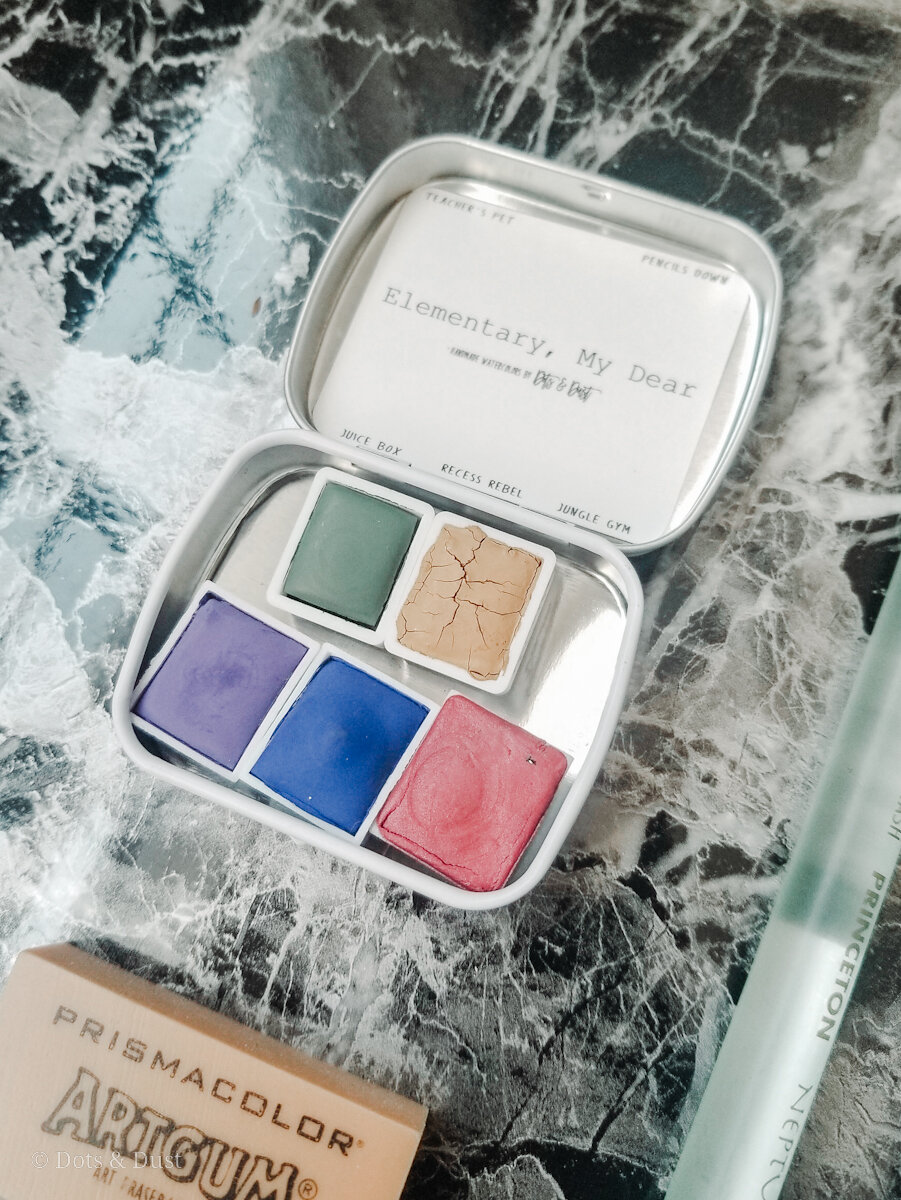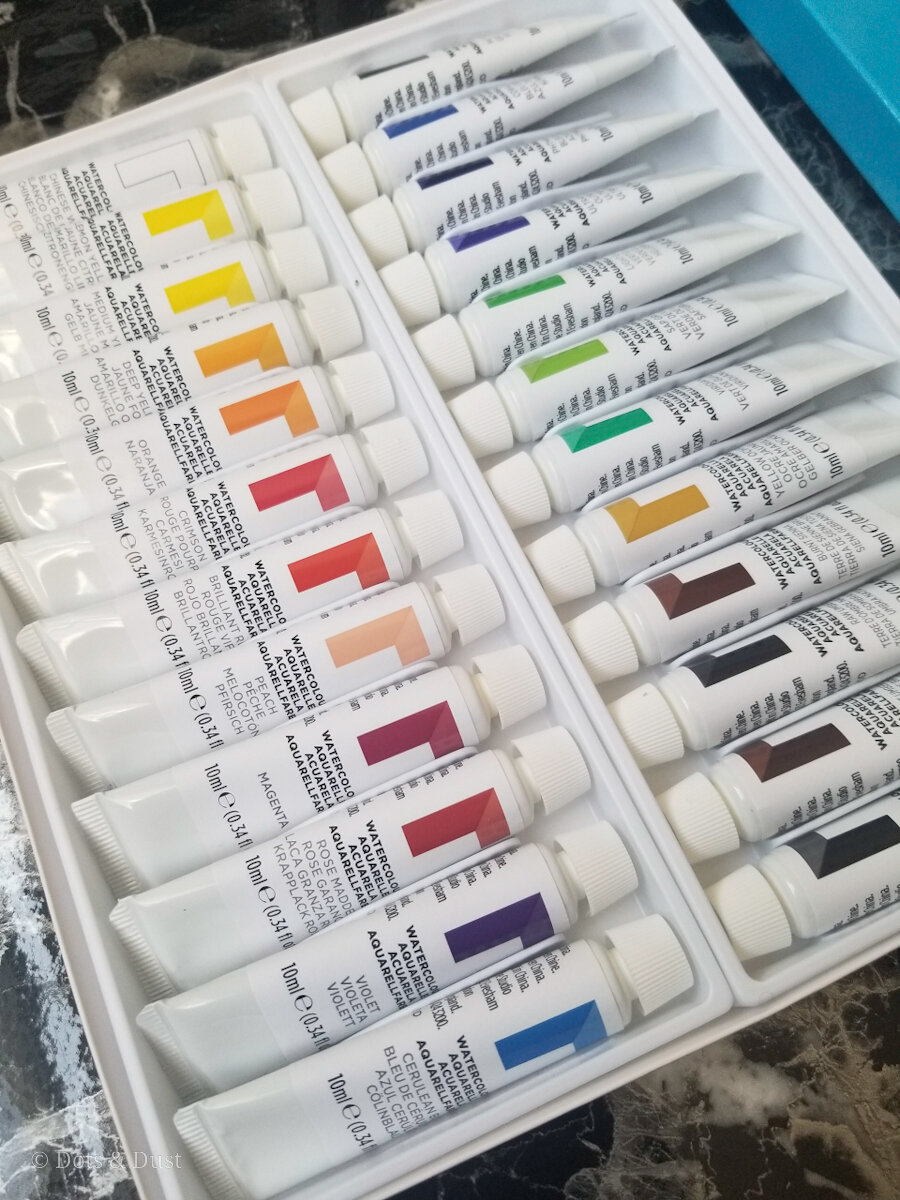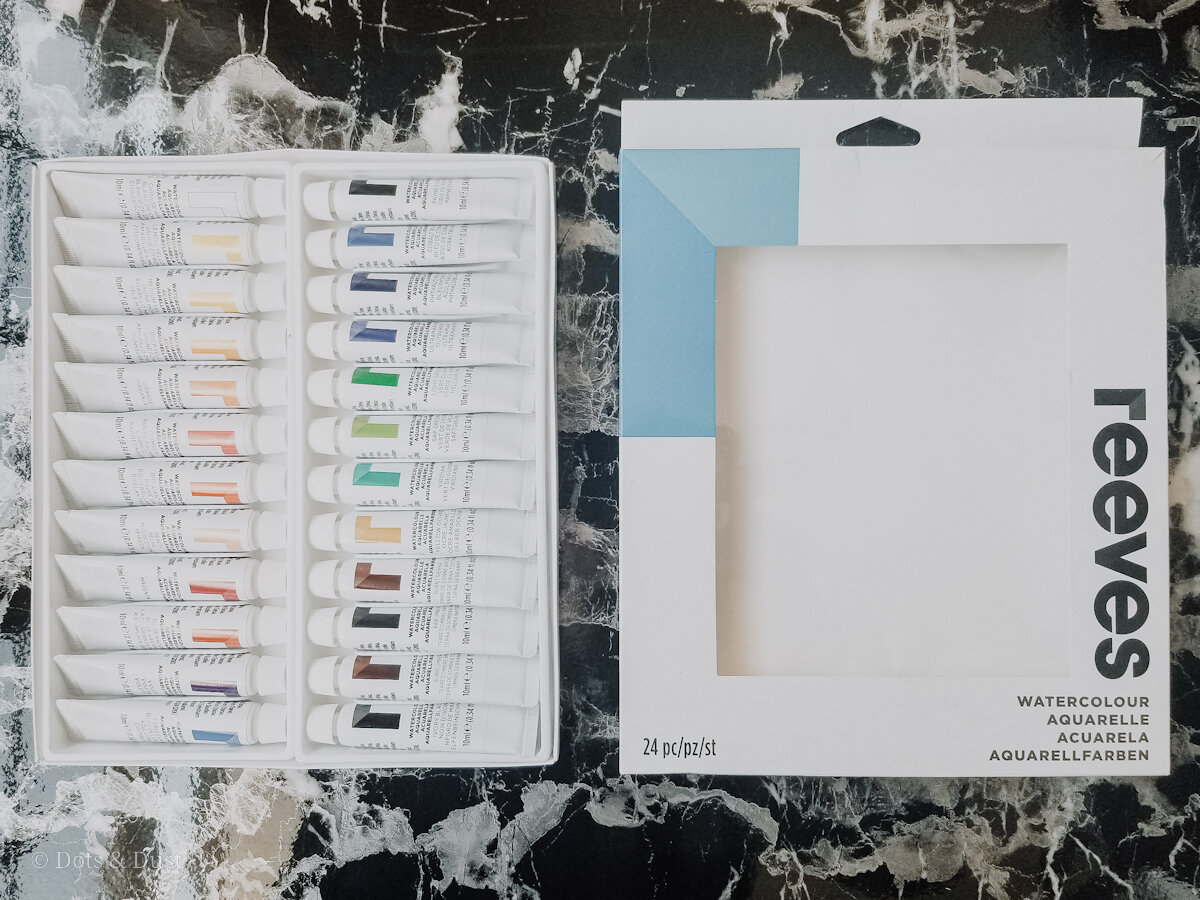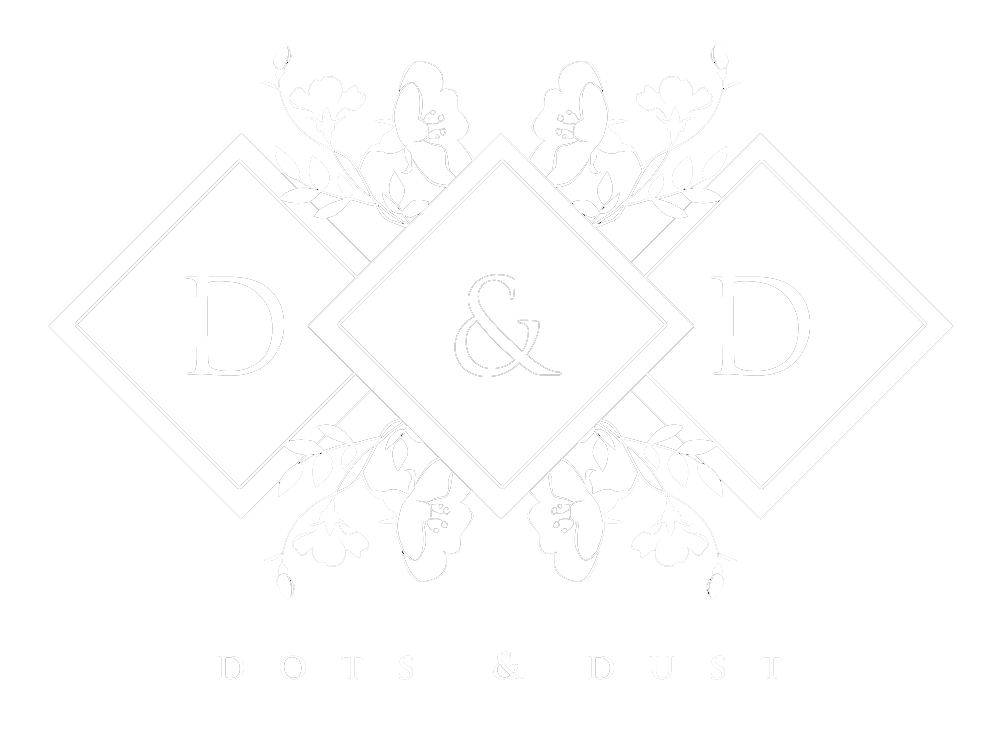My Favorite Watercolor Supplies for Beginners & Enthusiasts
Disclosure: This post may contain affiliate links, meaning, at no additional cost to you, I will earn a commission if you choose to click through and make a purchase.
Painting with watercolor is just straight-up magical. There is something to be said for placing your brush to a page and watching the watercolor pigments move freely. Many lovers of art are drawn to watercolor for its light, airy, transparent, and ethereal tones.
But if you are new to the watercolor game, it can get extremely overwhelming to know which supplies to start off with. And if you are not careful, it can quickly become a very expensive hobby.
So where do you begin? Which supplies do I consider my “tried and true” faves?
Let me take your hand and give you a quick tour of my most favorite watercolor supplies.
Paper
Let’s start with watercolor paper. It’s WATERCOLOR PAPER where I think you need to invest most of your money in watercolor supplies.
Now, why is that?
You could go out there and spend $5 on a cheap pad of watercolor paper. But I guarantee that when it comes time to learn different techniques, you will quickly get frustrated with the lack of versatility that your cheaper paper is allowing you.
No matter the brand, I would recommend getting 100% COTTON, 140 lb. cold press watercolor paper. “Cold press” means that the paper was made by two cold metal rollers pressing the paper together. It is with this type of paper that you get more “tooth” and texture found in your paper which is perfect for the pigment to settle in and easier for a beginner to navigate.
When you choose 100% cotton paper, you are guaranteein
You also have the choice of buying sheets of paper or blocks of paper. If you choose sheets, make sure to use painter’s or washi tape to tape down all sides of your paper to your working surface. Since water is added while you paint, the sheet will tend to curl up or wrinkle if you do not do this first.
The more you paint and learn, the more you will find the blocks of watercolor paper to be preferable. These watercolor sheets are glued on all four sides into a block to prevent any curling or wrinkle while you paint. Definitely, something to invest in later as these options are a bit pricier.
My Paper Choices:
-Legion Stonehenge Aqua 140 lb., Cold Press, 12”x16” Watercolor Block (15 sheets)
-Canson 9”x12” 140 lb. Cold Press Watercolor Paper (30 sheets)
Brushes
Now, for your paintbrushes. There are SO MANY different watercolor brushes out there that come in what seems like endless sizes and shapes.
Where would I suggest you start? Grab a set of round watercolor brushes in the sizes 12, 6, 4, & 0. The larger the number on the brush, the bigger the brush tips are and the more surface area you can paint at one time. With these four sizes, you are covered for painting large areas of your page (like skies and landscapes) and smaller details (like veins in leaves or textures on bricks). And if you can, pick up a square wash brush in a size ¾” for larger washes as well.
My Favorite Brushes:
-Princeton Neptune 3/4” Square Wash Brush
Pencils
When faced with difficult compositions or watercolor pieces that will require immense amounts of detail, a quick sketch will be necessary.
You will always need a standard #2 pencil, but what you may not have known is that I would suggest having a watercolor pencil nearby as well.
Watercolor pencils are great for watercolor pieces (not involving ink) because once you start painting over them, the sketches will blend out seamlessly with your painting. Just make sure to sketch VERY LIGHTLY to prevent any harsh lines.
Be sure to have a pink and a grey watercolor pencil on hand. A pink one is great for sketching the parts of your design that will be painted with warmer tones and the grey one is perfect for your cooler hues.
My Favorite Watercolor Pencils:
-Derwent Watercolor Pencils in the colors Rose Pink (#18) and Gunmetal (#69)



Watercolor Paints
Ahhhh. My absolute favorite. Watercolor paints.
Now if you don’t know, my love for painting with watercolor is what drove me to make my own collection of handmade watercolor paints for hobbyists and professional artists. So I am pretty passionate about watercolor paints.
But I will say that if you are a beginner and cannot afford the more expensive watercolor paints out there, then there are some great options still out there for you. But for the love of everything that is sacred, PLEASE avoid purchasing Crayola watercolor paints (the ones your kiddos probably use) and expect to get the same gorgeous results. I promise you will save yourself from heartache and frustration.
You can purchase watercolor paints in pans or tubes. Pans (half pans or whole pans) are compact and great if you want to paint “on the go.” Tubes of watercolor paints can be squirted onto a paint palette (or in my case, an old white ceramic plate) and mixed together to form new colors. Keep in mind that you can still mix paint colors that come from half pans but you have a bit more control with paint tubes.
Which colors should you look for? Well, let’s take it back to your first box of crayons as a kiddo. Your first set of watercolor paints should be very similar.
You always want your primary colors (red, blue, yellow) and secondary colors (orange, green, purple). With watercolors, you can actually do without black or brown since these can be made by mixing other colors together. And white watercolor paint just doesn’t make sense since you can lighten the paint colors you already have by adding more water or using the white space that is naturally there from your paper.
Watercolor Paints I Adore:
-Half Pans: Dots & Dust Handmade Watercolor Set, “Elementary, My Dear.” ALWAYS and FOREVER. The colors in this set mix well with EVERYTHING.
-Watercolor Tubes: Reeves 24 pc Watercolor Paint in 10 ml tubes or Daniel Smith Introductory Watercolor, 6 tubes
Other Tools I Use Often:
-White ceramic plate (to mix paint colors in)
-Two Jars of Water (one for cool colors & one for warm colors)
-Scraps of paper towel (to blot up mistakes, create texture, create highlights, or bring forward more white space)
-Washi Tape (when I need to tape down a sheet of watercolor paper to my desk)
-Huion Light Pad (for when you want to trace a design or outline onto watercolor paper)
-Modern Watercolor Botanicals by Sarah Simon & Everyday Watercolor by Jenna Rainey (If you want a THOROUGH lessons on watercolors, color theory, techniques, and amazing tips, YOU MUST buy these two books. They are just amazing!)
And there you have it!
Watercolor is such an amazing hobby and is so worth the investment, time, and practice that you put in. I hope that this post helps you determine where you’d like to start on your creative journey and simplifies your watercolor shopping options.
Want to see where I get all of my favorite art supplies?
Visit my Amazon Storefront!



















